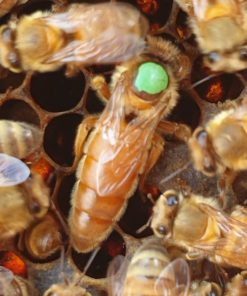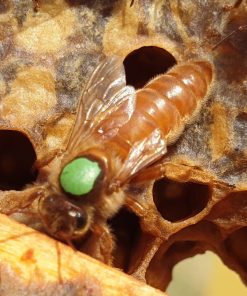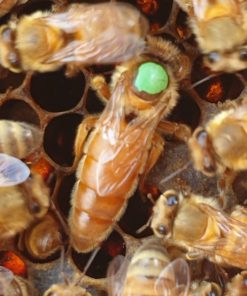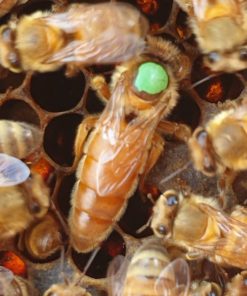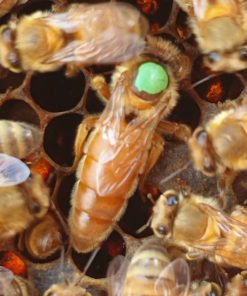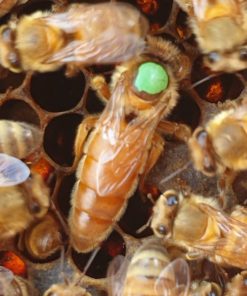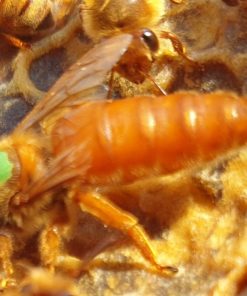Selected Italian or Ligustica Queens / Bees for Sale
Our Italian or Ligustica Queens are suitable for honey and pollen production also for queen production. Available from April to October. We have a limited number and pre-order is required.
Italian (Ligustica) Queens / Bees history
The Italian honey bee is thought to originate from the continental part of Italy, south of the Alps, and north of Sicily. The subspecies may have survived the last Ice Age in Italy. It is genetically a different subspecies than that from the Iberian peninsula and from Sicily. It is the most widely distributed of all honey bees, and has proven adaptable to most climates from subtropical to cool temperate, but it is less successful in humid tropical regions. It is sometimes called the Ligurian bee.
Italian bees, having been conditioned to the warmer climate of the central Mediterranean, are less able to cope with the “hard” winters and cool, wet springs of more northern latitudes. They do not form such tight winter clusters. More food has to be consumed to compensate for the greater heat loss from the loose cluster. The tendency to raise broods late in autumn also increases food consumption. The noted beekeeper, Thomas White Woodbury, first introduced the Italian bee to Britain in 1854 and regarded it as vastly superior to the English Black.
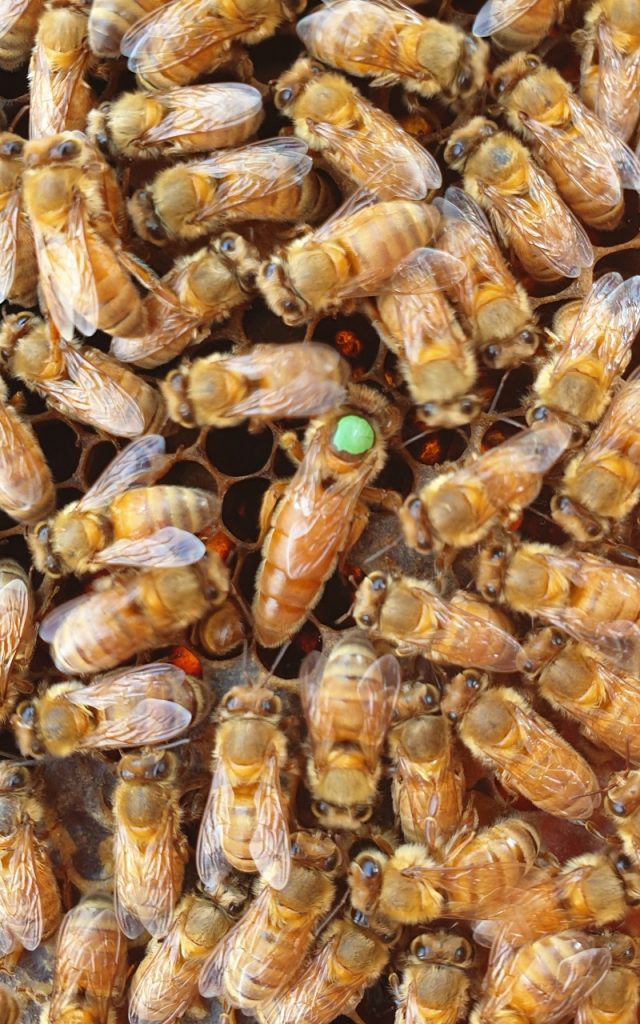
Color: Abdomen has brown and yellow bands. Among different strains of Italian bees, there are three different colors: Leather; bright yellow (golden); and very pale yellow (Cordovan).
Size: Their bodies are smaller and their overhairs are shorter than those of the darker honeybee races.
Tongue length: 6.3 to 6.6 mm
Mean cubital index: 2.2 to 2.5
Italian (Ligustica) Queens / Bees characteristics
Italian queens begin very early in increasing their brood production. The queens tend to begin increasing their brood production once the pollen begins to come into the hive. In Romania, we can see this happen once the Maple trees begin to bloom.
Italian bees will tend to swarm during their second year within the hive. This will happen during the Spring season and into summer. Overall, the Italian has average tendencies to swarm.
Italian bees are a more laid back type of bee. They are very popular because they are the easiest of the honey bees to work with. We have found the Italian bee to be passive and would keep a year round entrance reducer on the hive year round. This can spell problems when it comes to small hive beetles, European Hornets, etc…
Italian bees once again are the standard for honey production. Italians tend to not gather nectar during cooler and overcast days. So if you have a cool and overcast Spring season your honey production will be lower.
Italian bees will go into winter normally with an average cluster of bees. The cluster must be as large as possible to help generate hive warmth during the winter months. Low hive warmth equals a loss of bees.
- early spring development
- very good honey yield
- raising big colonies
- gentleness
- low tendency to swarming
- more prone to drifting and robbing
- build combs fast
- minimal use of propolis.
Italian queens for Sale
Italian (Ligustica) Queens
Italian (Ligustica) Queens
Italian (Ligustica) Queens
Italian (Ligustica) Queens
Italian (Ligustica) Queens
Overwintered Italian (Ligustica) Queen Artificially Inseminated
Italian (Ligustica) Queens
